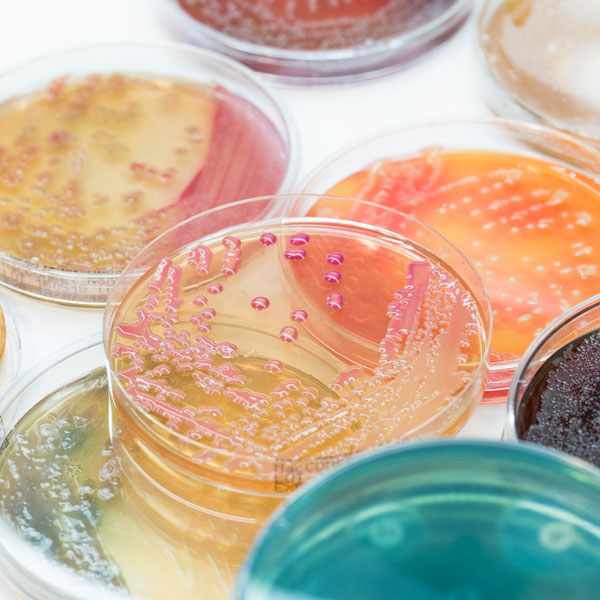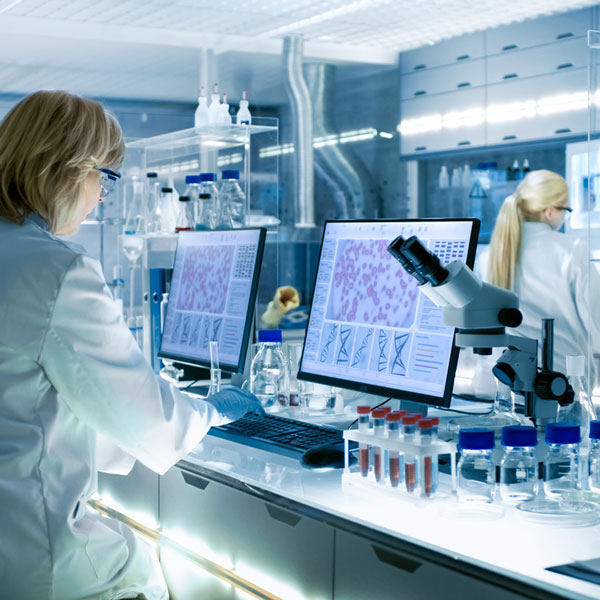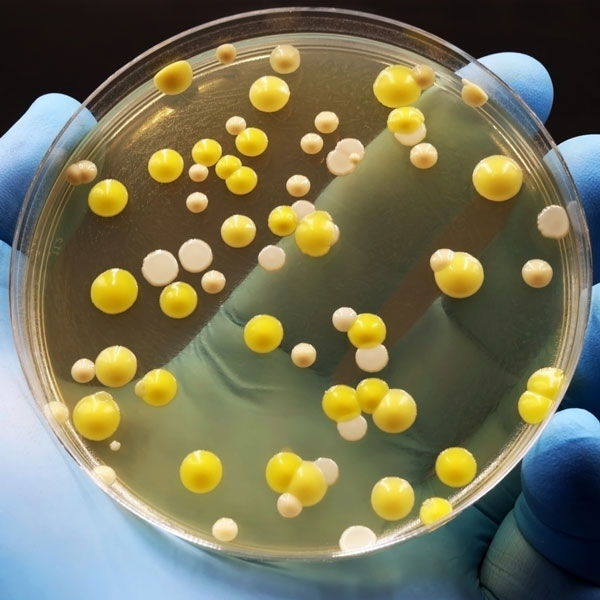Environmental Microbiology Testing
Looking for Environmental Testing? Check Out What We Have to Offer.

Aquatic Microbiology:
Aquatic microbiology testing involves the analysis of water samples to assess the presence and concentration of microorganisms in aquatic environments, such as lakes, rivers, ponds, and oceans. This testing is essential to monitor the microbial quality of water sources used for drinking, recreation, and industrial purposes. It helps identify potential health hazards, microbial pollution, and the impact of human activities on water ecosystems.
Total Coliform:
The total coliform test is a basic indicator of water quality, providing an estimate of the overall microbial load in a sample. Coliform bacteria are widespread in the environment, and their presence may not necessarily indicate the presence of harmful pathogens. However, the test serves as an initial screening tool to identify potential contamination sources. Monitoring total coliform levels is vital for identifying possible breaches in water treatment systems or sewage leaks that could lead to unsafe drinking water and the spread of waterborne diseases.
Escherichia Coliform (E. Coli):
The Escherichia coli test is a specific indicator of recent fecal contamination in water. As E. coli is commonly found in the intestines of warm-blooded animals, its presence in water suggests the potential for the presence of harmful pathogens associated with fecal matter. The test is particularly important for monitoring recreational water bodies, assessing the safety of drinking water sources, and preventing outbreaks of waterborne illnesses such as gastrointestinal infections.
Fecal Coliform:
Fecal coliforms are a subgroup of coliform bacteria exclusively found in the intestines and feces of warm-blooded animals. Monitoring fecal coliform levels in water provides a more accurate assessment of fecal contamination compared to total coliform testing. High levels of fecal coliforms indicate a higher likelihood of harmful pathogens and can trigger immediate action to mitigate potential health risks.
SRB – Sulfate Reducing Bacteria:
Sulfate-reducing bacteria (SRB) can thrive in anaerobic environments and play a significant role in the biogeochemical cycling of sulfur. However, they can also lead to the production of hydrogen sulfide gas, which causes foul odors, corrosion in industrial equipment, and deterioration of metal structures. Environmental microbiology testing for SRB helps industries such as oil and gas, wastewater treatment, and marine engineering monitor and manage microbial-induced corrosion and mitigate potential damage and safety hazards.
APB – Acid Producing Bacteria:
Acid-producing bacteria (APB) are microorganisms that generate acids as metabolic by-products. They can contribute to the degradation of concrete, metals, and other materials in various environmental settings. By identifying the presence and activity of APB, environmental testing enables industries, construction sites, and infrastructure maintenance agencies to implement suitable preventive measures and materials to avoid structural damage and prolong the lifespan of critical assets.
IRB – Iron-Related Bacteria:
Iron-related bacteria (IRB) are known for their involvement in the oxidation and reduction of iron compounds. They play a role in the formation of iron deposits, which can lead to biofouling in water systems and affect the performance of industrial processes and water treatment facilities. Environmental microbiology testing for IRB helps identify potential biofouling issues and allows for proactive measures to control bacterial growth and maintain system efficiency.

Staphylococcus:
Staphylococcus, a Gram-positive bacteria, is a significant human pathogen responsible for various infections. It can survive in various environments, including hospital surfaces, food, and water, and form biofilms. Staphylococcus aureus can cause minor skin infections to severe conditions like pneumonia, bloodstream infections, and surgical site infections. Methicillin-resistant strains, like MRSA, pose a public health concern. Environmental testing involves isolating and identifying Staphylococcus species using traditional culture-based methods and molecular techniques like PCR.
Streptococcus:
Streptococcus, a Gram-positive bacteria genus, is prevalent in the environment, particularly in respiratory and gastrointestinal tracts. Some species contribute to normal human and animal microbiota, while others can be opportunistic pathogens causing infections. Streptococcus pyogenes and pneumoniae are well-known human pathogens, causing infections like strep throat and necrotizing fasciitis. Environmental testing involves isolating and identifying specific species using culture-based methods, antigen detection tests, and molecular techniques.
Viable Count:
Viable count testing involves quantifying the number of viable (living) microorganisms in a given sample. This test provides essential information about microbial populations’ size and health, aiding in assessing the effectiveness of water and wastewater treatment processes, evaluating the success of bioremediation efforts, and identifying potential sources of contamination in various environmental matrices.
Denitrifying Bacteria (DN):
Denitrifying bacteria are crucial for nitrogen cycling in the environment. They convert nitrates to nitrogen gas during denitrification, which helps balance nitrogen levels in ecosystems and prevent excessive nutrient loading in water bodies. Environmental testing for denitrifying bacteria allows scientists and environmental managers to understand the microbial processes governing nitrogen dynamics and design appropriate nutrient management strategies to protect water quality.
Legionella:
Legionellaceae bacteria, which are present in soil and aquatic settings, can be inhaled or aspirated and cause pneumonia known as Legionnaires’ disease. Although other species can also cause the disease, Legionella pneumophila is most frequently associated to it. Low pH, dissolved oxygen levels, and common chlorination methods are ineffective against legionella. Heavy cigarette smoking, chronic lung illness, aging, and immunocompromised individuals are risk factors. The only way to become exposed to legionella is through inhaling or aspirating infected, aerosolized water. Organizations including the CDC, ASHRAE, and others advise routine monitoring. The majority of outbreaks are caused by Legionella, which is found in tainted water and in biofilm in cooling towers, whirlpool spas, and potable water distribution systems.
Mold and Fungi:
Environmental testing for mold and fungi is critical for indoor air quality assessments, especially in buildings with water damage or poor ventilation. Some mold species produce mycotoxins, which can cause health problems when inhaled or ingested. Identifying and quantifying mold and fungi helps in implementing effective remediation measures to maintain a healthy indoor environment.
MRSA – Methicillin-Resistant Staphylococcus Aureus:
MRSA is a strain of Staphylococcus aureus resistant to certain antibiotics. Environmental testing can help identify potential sources of MRSA contamination, such as in healthcare settings, and implement measures to prevent its spread and protect public health.

Mycotoxins:
Mycotoxins are toxic compounds produced by some molds. Environmental testing for mycotoxins is essential for assessing potential health risks associated with contaminated food products, agricultural commodities, and indoor environments. By detecting and quantifying mycotoxins, regulatory agencies and food safety organizations can establish appropriate guidelines and ensure consumer safety.
Nitrifying Bacteria (N):
Nitrifying bacteria play a crucial role in converting ammonia to nitrites and then to nitrates during the nitrification process. Monitoring nitrifying bacteria is essential for evaluating the efficiency of nitrogen removal in wastewater treatment plants and maintaining balanced nitrogen levels in aquatic ecosystems.
Sewage Contamination:
Testing for sewage contamination is crucial for identifying potential threats to water quality and public health. It helps pinpoint the sources of contamination and assists in implementing appropriate measures to prevent the spread of waterborne diseases and protect the environment.
Slime-Forming Bacteria (SLYME):
Slime-forming bacteria can lead to biofilm formation on surfaces, causing fouling and corrosion in water systems. By testing for slime-forming bacteria, industries can take proactive steps to prevent biofouling and maintain the efficiency of industrial processes.
Whole Genome Sequencing (WGS):
Whole Genome Sequencing (WGS) is an advanced technique that provides comprehensive genomic information about microorganisms. It is a powerful tool for tracking outbreaks, identifying virulence factors, and studying microbial diversity. WGS helps researchers and epidemiologists gain valuable insights into the genetic characteristics of environmental microorganisms, aiding in risk assessment and developing targeted control strategies.
Plant Pathogen Diagnostic Services:
Plant pathogen diagnostic services involve testing plants and agricultural samples to detect and identify pathogens responsible for plant diseases. Early detection helps farmers and agriculture industries implement appropriate disease management strategies and prevent crop losses.
Special Projects / Research and Development:
Environmental microbiology continuously explores specialized projects and research to advance testing methodologies, study emerging pathogens, and develop novel solutions for environmental challenges. These initiatives drive innovation in the field and lead to improved detection techniques, better risk assessments, and enhanced environmental management practices.
Analytical Test With Methods
- Actinomyces spp
SSSA - Aerobic Plate Count (APC) / TPC/Standard Plate Count
CMMEF 7.63 - Aerobic Plate Count (cosmetics/products-bam)
BAM 23H1 - Aerobic Plate Count-N Certified APC / HPC / TPC
SM 9215B - Aerobic Plate Count-Petrifilm
AOAC - Aeromonas
AOAC/CMMEF - Algal count
SM - Anaerobic Plate Count
9215B mod. - Bacterial Count with Gram Stain
AOAC - Bacterial ID per Species
Various - Camplylobacter-N
CMMEF - Campylobacter-N
SM9260G - Clostridium perfringens
AOAC/CMMEF - Denitrifying Bacteria
SSSA - Denitrifying Bacteria Identification
SSSA - Drinking Water Package (Total Coliform P/A and HPC)
SM 9223B - E. Coli
CMMEF 35.24 - E. Coli H7:0157 including H7-P/A
SM 9260F
AOAC 996.09 - E. Coli-IDEXX-N Certified
SM 9223B - E. Coli-MF-N
SM 9222G - E. Coli-N-Petrifilm
CMMEF/AOAC - E.Coli-Chromogenic P/A Certified
SM 9223B - Enterococcus-N
SM 9230C - Fecal Coliforms-MF-N Certified
SM 9222D - Fecal Coliforms-MTF-4 dil-N certified
SM 9221E - Fecal Coliforms-N
SM 9222D - Fecal Streptococcus mF
SM 9215B - Fecal Streptococcus-N
SM 9230C - Filth Test
AOAC 945.80 - Flavobacterium spp.
Various - Hemolytic Bacterial Count
AOAC/CMMEF - Heterotrophic Plate Count (HPC) / APC / TPC
SM 9215B - Iron Depositing Bacteria
SM 10200 - Klebsiella spp.
AOAC/CMMEF - Lactic acid bacteria (Petrifilm)
AOAC - Legionella-air culture
SM 9260J - Legionella-spp-P/A
SM 9260J - Listeria monocytogenes
AOAC/CMMEF - Listeria spp-P/A
CMMEF BAM/AOAC - Luminometer Test
Bioluminescence - Microscopic Exam
SM 10200 - Mold by Agar Plate ID 3spp.
Viable - Mold by Culture Counts
Viable - Mold by Culture ID-3 species
Viable - Mold by Direct Exam
Microscopy - Pseudomonas Aeroginosa
SSSA/SM - Salmonella Composite
AOAC/CMMEF - Salmonella Sero ID Only
AOAC/CMMEF - Salmonella spp.
SM 9260B
CMMEF BAM/AOAC - Shigella spp
CMMEF BAM/AOAC - Shigella spp.
SM 9260E/ AOAC - Staphylococcus Aeureus-N Petrifilm
CMMEF/AOAC - Staphylococcus Aureus Coagulase
AOAC/CMMEF - Staphylococcus spp.-N
SM 9213B - Sulfate Reducing Bacteria
SM 9240D - Total Coliform VRBA
AOAC/CMMEF - Total Coliforms Chromogenic P/A Certified
SM 9223B - Total Coliforms-IDEXX-N
SM9223B - Total Coliforms-MF-N certified
SM 9222B - Total Coliforms-N
SM 9222D - Total Coliforms-Petrifilm
CMMEF/AOAC - Total Free Nitrogen Fixers + Bradirhizobium
SSSA - Total Plate Count (TPC) / APC / HPC
SM 9215B - Total Plate Count-N
CMMEF 7.63 - Vibro spp-P/A
SM 9260H
CMMEF BAM - Yeast and Mold in Cosmetics
Bam 23H2 - Yeast and Mold-N
SM 92610B - Yersinia spp
AOAC/CMMEF
